I'm trying to graph multiple nonlinear least squares regression in r in different colors based on the value of a variable. However, I also display the equation of the last one, and I would like the color in the nonlinear regression corresponding to the equation to be black as well.
What I've tried is shown in the geom_smooth() layer - I tried to include an ifelse() statement, but this doesn't work because of reasons described here: Different between colour argument and aes colour in ggplot2?
test <- function() {
require(ggplot2)
set.seed(1);
master <- data.frame(matrix(NA_real_, nrow = 0, ncol = 3))
for( i in 1:5 ) {
df <- data.frame(matrix(NA_real_, nrow = 50, ncol = 3))
colnames(df) <- c("xdata", "ydata", "test")
df$xdata = as.numeric(sample(1:100, size = nrow(df), replace = FALSE))
df$ydata = as.numeric(sample(1:3, size = nrow(df), prob=c(.60, .25, .15), replace = TRUE))
# browser()
df$test = i
master <- rbind(master, df)
}
df <- master
last <- 5
# based on https://stackoverflow.com/questions/18305852/power-regression-in-r-similar-to-excel
power_eqn = function(df, start = list(a=300,b=1)) {
m = nls(as.numeric(reorder(xdata,-ydata)) ~ a*ydata^b, start = start, data = df)
# View(summary(m))
# browser()
# eq <- substitute(italic(hat(y)) == a ~italic(x)^b*","~~italic(r)^2~"="~r2*","~~p~"="~italic(pvalue),
eq <- substitute(italic(y) == a ~italic(x)^b*","~~italic('se')~"="~se*","~~italic(p)~"="~pvalue,
list(a = format(coef(m)[1], digits = 6), # a
b = format(coef(m)[2], digits = 6), # b
# r2 = format(summary(m)$r.squared, digits = 3),
se = format(summary(m)$parameters[2,'Std. Error'], digits = 6), # standard error
pvalue = format(summary(m)$coefficients[2,'Pr(>|t|)'], digits=6) )) # p value (based on t statistic)
as.character(as.expression(eq))
}
plot1 <- ggplot(df, aes(x = as.numeric(reorder(xdata,-ydata)), y = ydata ) ) +
geom_point(color="black", shape=1 ) +
# PROBLEM LINE
stat_smooth(aes(color=ifelse(test==5, "black", test)), method = 'nls', formula = 'y~a*x^b', method.args = list(start= c(a =1,b=1)),se=FALSE, fullrange=TRUE) +
geom_text(x = quantile(df$xdata)[4], y = max(df$ydata), label = power_eqn(df), parse = TRUE, size=4, color="black") + # make bigger? add border around?
theme(legend.position = "none", axis.ticks.x = element_blank() ) + #, axis.title.x = "family number", axis.title.y = "number of languages" ) # axis.text.x = element_blank(),
labs( x = "xdata", y = "ydata", title="test" )
plot1
}
test()
This is the graph I got.
I would like the line corresponding to the points and equation to be black as well. Does anyone know how to do this?
I do not want to use a scale_fill_manual, etc., because my real data would have many, many more lines - unless the scale_fill_manual/etc. can be randomly generated.
